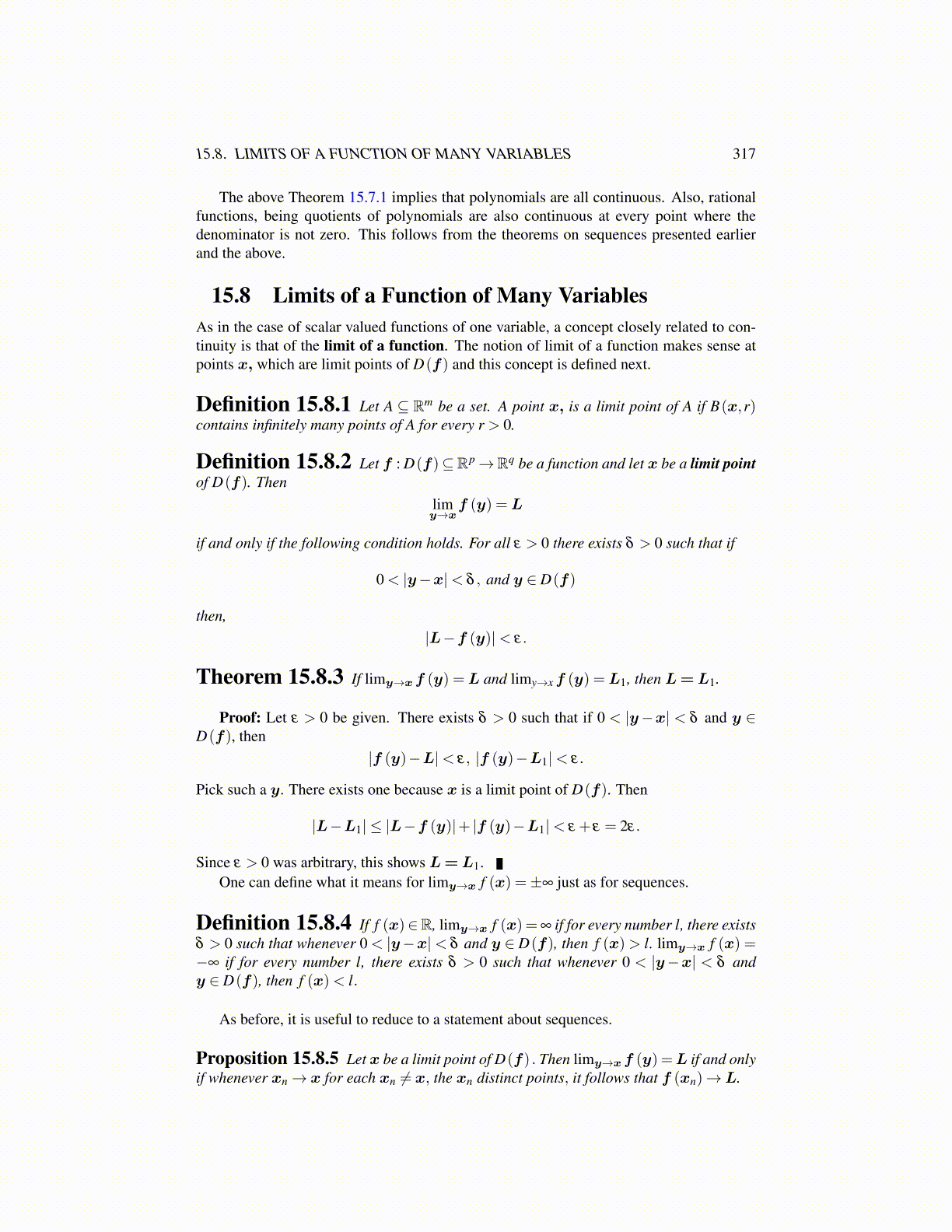
15.8. LIMITS OF A FUNCTION OF MANY VARIABLES 317
The above Theorem 15.7.1 implies that polynomials are all continuous. Also, rationalfunctions, being quotients of polynomials are also continuous at every point where thedenominator is not zero. This follows from the theorems on sequences presented earlierand the above.
15.8 Limits of a Function of Many VariablesAs in the case of scalar valued functions of one variable, a concept closely related to con-tinuity is that of the limit of a function. The notion of limit of a function makes sense atpoints x, which are limit points of D(f) and this concept is defined next.
Definition 15.8.1 Let A ⊆ Rm be a set. A point x, is a limit point of A if B(x,r)contains infinitely many points of A for every r > 0.
Definition 15.8.2 Let f : D(f)⊆Rp →Rq be a function and let x be a limit pointof D(f). Then
limy→x
f (y) =L
if and only if the following condition holds. For all ε > 0 there exists δ > 0 such that if
0 < |y−x|< δ , and y ∈ D(f)
then,|L−f (y)|< ε.
Theorem 15.8.3 If limy→xf (y) =L and limy→xf (y) =L1, then L=L1.
Proof: Let ε > 0 be given. There exists δ > 0 such that if 0 < |y−x| < δ and y ∈D(f), then
|f (y)−L|< ε, |f (y)−L1|< ε.
Pick such a y. There exists one because x is a limit point of D(f). Then
|L−L1| ≤ |L−f (y)|+ |f (y)−L1|< ε + ε = 2ε.
Since ε > 0 was arbitrary, this shows L=L1.One can define what it means for limy→x f (x) =±∞ just as for sequences.
Definition 15.8.4 If f (x)∈R, limy→x f (x) =∞ if for every number l, there existsδ > 0 such that whenever 0 < |y−x|< δ and y ∈ D(f), then f (x)> l. limy→x f (x) =−∞ if for every number l, there exists δ > 0 such that whenever 0 < |y−x| < δ andy ∈ D(f), then f (x)< l.
As before, it is useful to reduce to a statement about sequences.
Proposition 15.8.5 Let x be a limit point of D(f) . Then limy→xf (y) =L if and onlyif whenever xn → x for each xn ̸= x, the xn distinct points, it follows that f (xn)→L.